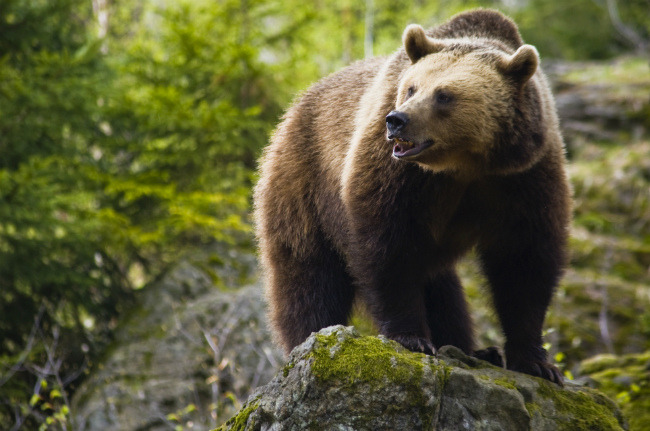Report: Yellowstone Grizzlies Are Dangerous
Human-grizzly encounters are on the rise in Yellowstone, according to a new report issued by the U.S. Fish and Wildlife Service. The study, which compared Yellowstone to Glacier as far back as 1990, showed a 50 percent increase in encounters over the past five years—from about 40 visitors charged by grizzlies in 2007 to 62 in 2011 (that compares to 17 in Glacier in 2011, despite its griz population being nearly double that of Yellowstone's).
While only two of those run-ins resulted in death, the report suggests some noteworthy trends that are the result of human and environmental pressures on the grizzly's habitat. Yes, Yellowstone bears are more dangerous than they used to be, but there's good reason for it (cold comfort, I know).
First, there are a lot of environmental pressures that are affecting grizzlies' diets in Yellowstone. Whitebark pines—an important source of pine nuts—are being killed off by blister rust. And predatory lake trout are eating up cutthroat trout, another valuable source of food for the bears. The lake trout spawn too deep in the lakes for grizzlies to eat. Because of these problems, much of a Yellowstone bear's diet is wild game, while 97 percent of a Glacier bear's diet is vegetarian. And what does a Yellowstone bear supplement its diet with? That's right, our trash (and, as Outside suggests, humans may be on the menu).
So Yellowstone bears are more habituated to people. And the ticker tape shows that those people aren't necessarily following traditional bear encounter wisdom. In 38 percent of all encounters, human food was present, suggesting that said humans weren't being smart about food and trash. Most charge victims were traveling alone in the backcountry, and weren't carrying pepper spray to defend themselves. Lastly, in the majority of the fatal attacks, the victims ran from the bears (triggering its predatory instinct), rather than standing their ground, making noise and otherwise trying to intimidate their aggressors.
Of course, what the report doesn't account for is the number of people who come to each park. In 2011, Yellowstone saw 3,394,326 visitors, almost double the 1,853,564 who visited Glacier. And Yellowstone likely gets more visitors who aren't, ahem, backcountry trained. Its human-animal encounters are well documented, with overeager shutterbugs being gored by bison and mauled by refrigerator-sized wild animals with startling regularity. And now, to add to the problem, there's an app to help vacationers see grizzlies first-hand.
So if you're headed to Yellowstone this summer—particularly into the backcountry—educate yourself about grizzlies before you go. Be alert, and be safe.
